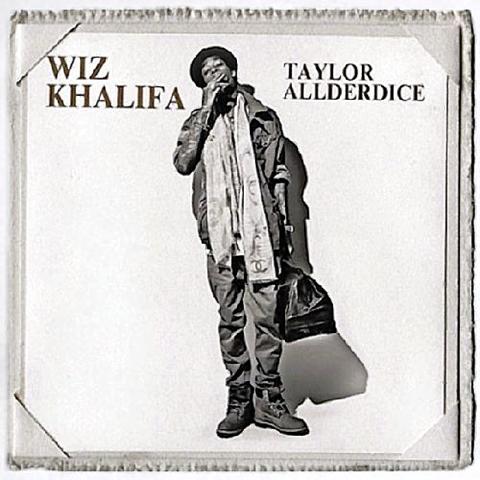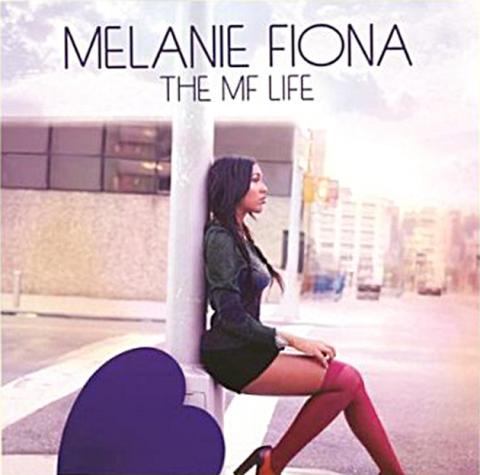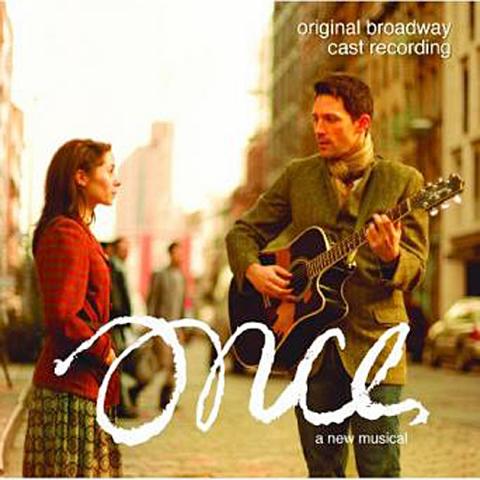Wiz Khalifa
Taylor Allderdice
taylorallderdicemixtape.com

Apologies are not ordinarily in order for rappers who have navigated the path from reliab le mixtape purveyor to steady pop presence, but in February, apologize Wiz Khalifa did, in an open letter to fans.
Recalling his influential, woozy 2010 mixtape Kush & Orange Juice he described knowing that he “had created a new genre” that would change music. (For argument’s sake, allow him his hyperbole.)
That mixtape gave him momentum, and a major-label deal, which led to his 2011 album Rolling Papers (Rostrum/Atlantic), which was shinier and less narcotic than his older work, but also successful; it was certified gold and spawned three platinum singles.

Still, something was missing. Wiz Khalifa’s letter laid out his feelings: “The mistake I made on Rolling Papers was thinking it was time to move on from that genre not knowing that it had impacted people so much. The album did great numbers, but creatively wasn’t my best work. No regrets though. We live and we learn.”
And we regress too, if moving backward feels like the right thing to do. Wiz Khalifa’s new mixtape, Taylor Allderdice, named for his high school, is meant to be a return to roots. It’s a move most artists preface with several years of compromising, but in the Internet era, it may become a more rapid phenomenon.
For Wiz Khalifa, this means a resumption of the trippy, cloudy odes to marijuana he made his name with. He’s not a clever rapper, but he’s dedicated.

“I swear to god that I’m so high feel like I’m going up a hill,” he raps on Rowland. On Never Been Part II it’s possible that all the THC is jumbling his sense of timing, as he crams awkwardly structured lyrics into rhyme: “I’m just smoking, living life like in the movies that I watch in my Jacuzzi/ Roll another doobie/ See what’s new, what’s on Netflix, order another movie.”
But Wiz Khalifa isn’t selling precision, he’s selling texture and charisma. The album is threaded together by bits of an often stoned-sounding interview — “I feel like my spirit is worldwide,” etc. And as ever, his flow lags appealingly behind the beat, as if he constantly has to remind himself he’s in the middle of a song and needs to finish. His choice of production adds to the effect — the dank T.A.P., produced by Spaceghostpurrp, and O.N.I.F.C., with its synths that are fat and dripping into each other and recall the warm embrace of quiet storm R ’n’ B. (A notable exception is the elegant Nameless, produced by Dope Couture, which has the easy charm of A Tribe Called Quest.)
What sets Taylor Allderdice apart from the music it’s harking back to is Wiz Khalifa himself. No longer is he a modest stoner. He has success, wealth, a tabloid-ready relationship with Amber Rose — Kanye West’s ex — and a strong belief in his invincibility. Once that lethargy was both a tactic and a goal for Wiz Khalifa. Now he has ambitionless raps about huge ambitions, too.
— JON CARAMANICA, NY Times News Service
Melanie Fiona
The MF Life
SRC/Title 9/Universal Republic)
In theory the most exciting song on Melanie Fiona’s second album, The MF Life, should be I Been That Girl. Written by Drake — the two were part of a group called The Renaissance, several years ago in Toronto — it’s a dark, slow creeper, with weepy piano and weepier lyrics about a no-good man. The sound is signature Drake but, as it happens, something of a struggle for Fiona, who never loosens up enough to melt into the track or the gloomy mood.
That turns out to be fine: On most of the rest of this album Fiona has the sturdy backdrops that her knowing and slightly husky voice needs. She’s perpetually aggrieved, and it suits her. Although this album lacks some of the intensity of her debut, The Bridge, which hit hard with done-wrong vintage-soul updates, it still showcases Fiona ably.
She tames a range of styles here, from the vibrating 1960s rock guitar on Wrong Side of a Love Song to Running, which was produced by Salaam Remi with some of the horns he must have had left over from old Amy Winehouse sessions. And Break Down These Walls has the rigor and intensity of mid-career Mary J. Blige, after her worst wounded years but before optimism set in.
Unexpectedly, the standout song is Can’t Say I Never Loved You, a light summery guitar ballad, produced by Espionage, that recalls Jason Mraz. It seems on the surface to be a mismatch — there’s nothing airy about Fiona; nothing that suggests comfort. And yet she calms herself here, trading anger for resignation — she can give in after all.
— JON CARAMANICA, NY Times News Service
Original Broadway Cast Recording
Once
Masterworks Broadway
Whether or not you’re a purist who prefers the intimate movie soundtrack for Once to the more polished Broadway cast recording, both defy pop music’s trend toward ever larger, louder, more impersonal sound. To hear the score’s plaintive Irish folk-pop played live by an ensemble that includes a shifting mix of guitar, violin, cello, mandolin, ukulele, accordion, piano and cajon drum is to be caressed by a warm acoustic sound that approaches the dynamic refinement of classical chamber music.
The unabashedly romantic score and the fervor of the performances by Steve Kazee and Cristin Milioti fill out this wisp of a star-crossed love story in which a busker on the streets of Dublin and a Czech immigrant, identified only as Guy and Girl, connect and disconnect. Not since The Light in the Piazza has a new Broadway score worn its heart more plainly on its sleeve.
Because the show’s signature ballad, Falling Slowly by Glen Hansard and Marketa Irglova, the movie’s Guy and Girl, won a 2007 Oscar for best song, you might think the show is a one-hit proposition. The cautious, halting melody, reminiscent in its opening phrases of the Motown classic, You’ve Really Got a Hold on Me, is one of the more indelible pop tunes of recent years.
But the other ballads — Hansard’s Leave, Sleeping, and When Your Mind’s Made Up, Irglova’s Hill, and Fergus O’Farrell’s Gold are almost as stirring. Musically, the most breathtaking moment is an exquisite a cappella reprise of Gold, sung softly by 11 singers.
Perfectly executed close harmonies are crucial elements of the music’s power. So is Kazee’s controlled baritone, which can suddenly break into an anguished cry. Interspersed with upbeat jigs and traditional tunes, “Once” manages the feat of being emotional but never mawkish.
— STEPHEN HOLDEN, NY Times News Service

April 28 to May 4 During the Japanese colonial era, a city’s “first” high school typically served Japanese students, while Taiwanese attended the “second” high school. Only in Taichung was this reversed. That’s because when Taichung First High School opened its doors on May 1, 1915 to serve Taiwanese students who were previously barred from secondary education, it was the only high school in town. Former principal Hideo Azukisawa threatened to quit when the government in 1922 attempted to transfer the “first” designation to a new local high school for Japanese students, leading to this unusual situation. Prior to the Taichung First

Chinese Nationalist Party (KMT) Chairman Eric Chu (朱立倫) hatched a bold plan to charge forward and seize the initiative when he held a protest in front of the Taipei City Prosecutors’ Office. Though risky, because illegal, its success would help tackle at least six problems facing both himself and the KMT. What he did not see coming was Taipei Mayor Chiang Wan-an (將萬安) tripping him up out of the gate. In spite of Chu being the most consequential and successful KMT chairman since the early 2010s — arguably saving the party from financial ruin and restoring its electoral viability —

The Ministry of Education last month proposed a nationwide ban on mobile devices in schools, aiming to curb concerns over student phone addiction. Under the revised regulation, which will take effect in August, teachers and schools will be required to collect mobile devices — including phones, laptops and wearables devices — for safekeeping during school hours, unless they are being used for educational purposes. For Chang Fong-ching (張鳳琴), the ban will have a positive impact. “It’s a good move,” says the professor in the department of

Toward the outside edge of Taichung City, in Wufeng District (霧峰去), sits a sprawling collection of single-story buildings with tiled roofs belonging to the Wufeng Lin (霧峰林家) family, who rose to prominence through success in military, commercial, and artistic endeavors in the 19th century. Most of these buildings have brick walls and tiled roofs in the traditional reddish-brown color, but in the middle is one incongruous property with bright white walls and a black tiled roof: Yipu Garden (頤圃). Purists may scoff at the Japanese-style exterior and its radical departure from the Fujianese architectural style of the surrounding buildings. However, the property